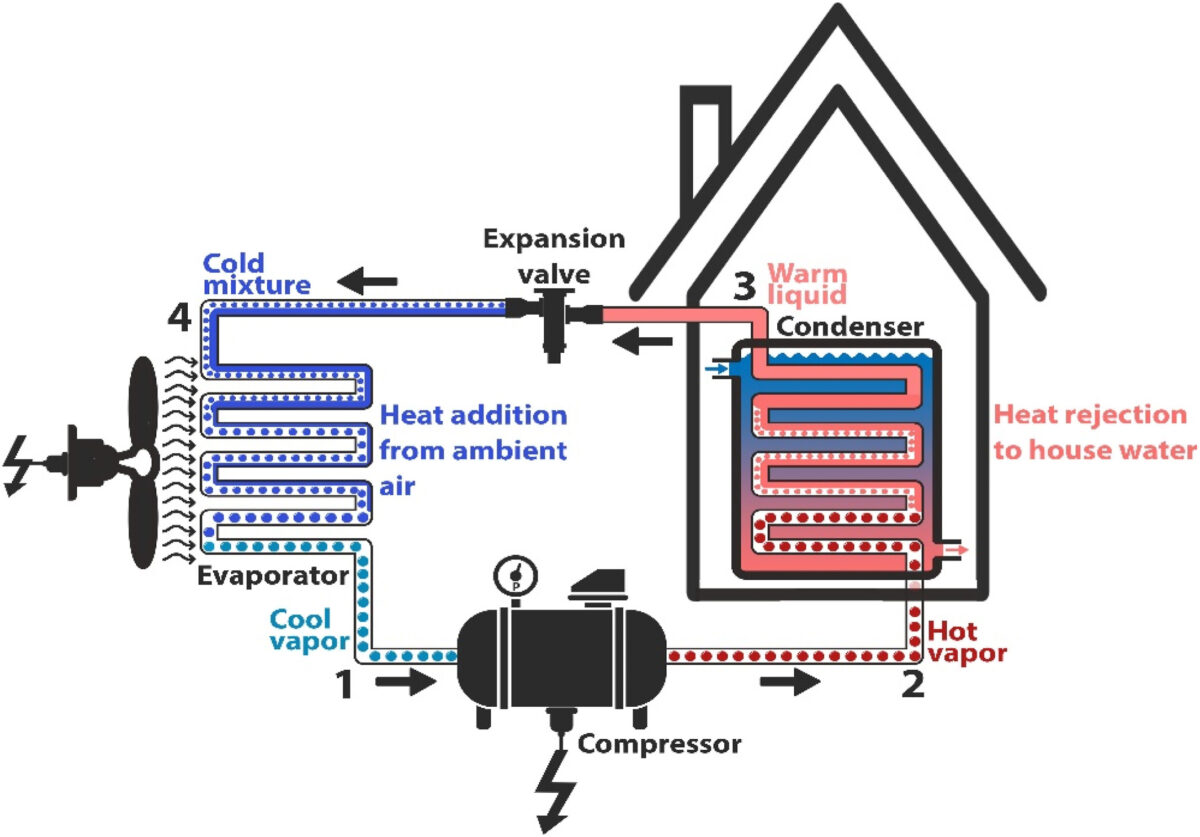A group of researchers at the University of Twente in the Netherlands has developed a simulation model to determine with accuracy the coefficient of performance (COP) of air-to-water heat pumps under non-frosting conditions.
The novelty of the new approach consists of considering how ambient temperature and relative humidity impact the COP, taking into account evaporator and condenser pressure drops in the simulation process.
The model is developed via Matlab software and is based on the equalization of the so-called logarithmic mean temperature difference (LMTD), which determines the temperature driving force for heat transfer in flow systems such as heat exchangers. “It combines an analysis of the impact of ambient temperature and relative humidity on the COP with a pressure drop simulation,” the scientists explained.
The model considers, in particular, single-phase and two-phase pressure drop correlations and seeks to set COP values with and without pressure drop for different ambient conditions and three different refrigerants, namely R410A, difluoromethane (R32), and propane (R290).
It assumes that air-to-water heat pumps have a constant isentropic efficiency of 80% and that there are no heat losses in the compressor and the expansion valve. “Many existing models additionally assume isobaric conditions in the evaporator and condenser,” the researchers said. “However, pressure drop affects the refrigerant properties and therefore also the COP and for that reason this model does take pressure drop into consideration.”
Popular content
The proposed method computes all unknown parameters under reference conditions and the pressure drop is incorporated using an iterative method. “Initially, the temperature difference between air/water and refrigerant at the evaporator/condenser refrigerant outlet is guessed,” the group explained. “If the evaporator temperature difference changed after solving for the condenser temperature difference, the process was repeated,” they said, highlighting the iterative character of the process.
According to the research team, the model showed a deviation of only 1.5% compared to COP values from heat pumps' datasheet. It also showed that ambient temperature has a strong influence on the COP, and that relative humidity becomes a performance enhancer once condensation begins. “Although the effect of relative humidity on the COP is less pronounced than the impact of ambient temperature, it can still result in performance gains of up to 10.4% for the reference heat pump,” it further explained.
The novel approach was introduced in the study “Performance evaluation of air-source heat pump based on a pressure drop embedded model,” published in Heliyon.
Looking forward, the academics said that future research could extend the model with a frosting simulation, and a defrosting mode. “To further enhance the model, assumptions such as the absence of unwanted heat losses could be eliminated, and a more realistic evaporator model could be developed, accounting for factors like pipe configurations,” they concluded.
This content is protected by copyright and may not be reused. If you want to cooperate with us and would like to reuse some of our content, please contact: editors@pv-magazine.com.



1 comment
By submitting this form you agree to pv magazine using your data for the purposes of publishing your comment.
Your personal data will only be disclosed or otherwise transmitted to third parties for the purposes of spam filtering or if this is necessary for technical maintenance of the website. Any other transfer to third parties will not take place unless this is justified on the basis of applicable data protection regulations or if pv magazine is legally obliged to do so.
You may revoke this consent at any time with effect for the future, in which case your personal data will be deleted immediately. Otherwise, your data will be deleted if pv magazine has processed your request or the purpose of data storage is fulfilled.
Further information on data privacy can be found in our Data Protection Policy.